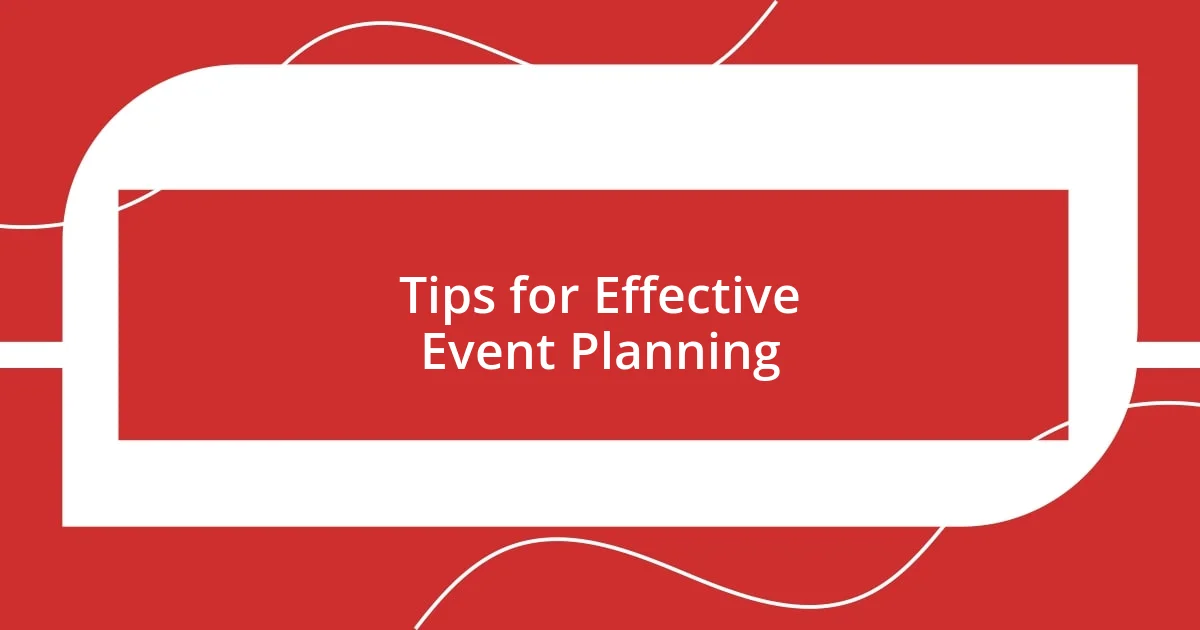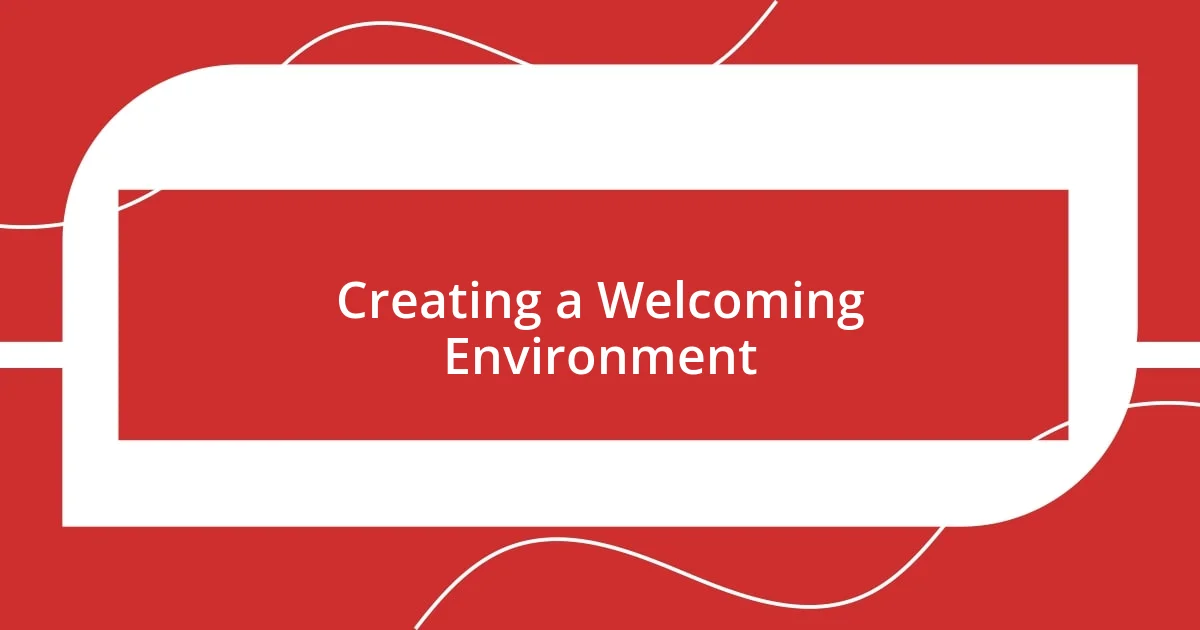Key takeaways:
- Intergenerational crafting events foster emotional bonds and storytelling, bridging generational gaps.
- Choosing inclusive projects that cater to various skill levels encourages collaboration and enhances creativity.
- Collecting feedback and observing interactions during events are essential for measuring success and improving future experiences.

Understanding Intergenerational Crafting Events
Intergenerational crafting events are fascinating gatherings where people from different ages come together to create. I vividly remember my first experience at one of these events; a spirited grandmother shared her knitting skills with a curious child, resulting in laughter and unexpected friendship. It’s heartwarming to see how crafting can bridge generational gaps, sparking conversations that might never happen in our fast-paced world.
These events are more than just a chance to make something beautiful; they serve as a platform for sharing stories and life lessons. When I see older participants reminiscing about their craft experiences while teaching younger ones, I can’t help but wonder: what wisdom are we missing out on when we don’t take time to connect? This mingling of skills and stories creates a tapestry of shared knowledge that enriches everyone involved.
Moreover, the emotional bond formed during these crafting sessions is truly special. I recall a poignant moment when a young participant presented a handmade card to an elder, thanking them for their guidance. It made me realize that crafting isn’t just about the end product; it’s about the connections we forge and the memories we create together. Engaging in these events nurtures community and fosters mutual respect across generations.

Benefits of Crafting Across Ages
Crafting across generations brings an incredible range of benefits, both emotionally and socially. I remember attending a crafting event where everyone, from toddlers to grandparents, gathered around a table full of supplies. As we painted and created together, I witnessed a young boy asking an older woman about her favorite childhood craft. Their shared laughter was a reminder of how simply engaging in a creative task can spark meaningful dialogues and foster understanding.
The advantages of these intergenerational crafting events are numerous:
- Strengthened Relationships: Participants bond over shared tasks, enhancing family ties and community connections.
- Knowledge Exchange: Older generations impart skills and wisdom while younger participants introduce fresh ideas and contemporary techniques.
- Enhanced Creativity: Diverse perspectives lead to innovative crafting solutions, as everyone brings their unique style to the table.
- Emotional Well-being: These interactions boost feelings of belonging and reduce social isolation, particularly for older participants.
In my experience, it’s often in those quiet moments of crafting that the most profound lessons emerge. I once watched a child carefully imitate an elder’s intricate crochet technique, their faces focused and serene. It was a beautiful reminder: creativity knows no age, and every stitch woven together tells a story of connection and growth.

Choosing the Right Craft Projects
Choosing the right craft projects for intergenerational events is crucial to ensure everyone enjoys the experience. From my perspective, selecting projects that cater to various skill levels can make a world of difference. For example, I once organized a simple painting class where both kids and seniors expressed themselves on canvas. Watching a little girl create a vibrant landscape next to an elder’s serene mountain scene was a beautiful reminder that creativity flourishes when we meet people where they are.
One aspect that I’ve found particularly important is to choose projects that allow for collaboration. A few years back, I led a sewing circle where participants crafted a patchwork quilt together. Each square told a story, representing their unique backgrounds and experiences. It amazed me how this shared endeavor not only resulted in a stunning quilt but also sparked heartfelt conversations. Such projects foster connections as participants learn from each other’s techniques and insights.
While it might be tempting to pick more complex crafts to impress, I believe simplicity often shines. Engaging in straightforward projects, like making friendship bracelets, allows both young and older participants to share their expertise. I remember one elderly gentleman teaching a young girl how to knot strings, transforming the task into a bonding activity filled with laughter. It’s moments like these that remind me how essential it is to tailor craft projects with thoughtfulness—making sure everyone feels valued and included in the creative process.
| Project Type | Skills Required |
|---|---|
| Simple Painting | Low |
| Patchwork Quilting | Medium |
| Friendship Bracelets | Low |

Tips for Effective Event Planning
When planning an intergenerational crafting event, communication is key. I’ve found that reaching out to potential participants beforehand can help gauge their interests and skill levels. For instance, during one event I coordinated, I sent a simple survey asking what crafts people were excited about trying. The feedback was invaluable, not just for planning purposes, but it also made participants feel valued from the very beginning, reinforcing a sense of community.
Timing is another critical factor. You wouldn’t believe how a well-timed break can uplift the energy in the room. I remember hosting a crafting day that included a short tea break, allowing everyone to relax and share stories. This not only rejuvenated the participants but also ignited new discussions and friendships. Have you ever noticed how casual conversations during breaks lead to the best ideas? It’s in these moments that true connections are forged.
Finally, consider the environment. I learned that setting up a welcoming space can make all the difference. A few soft tablecloths, comfortable seating, and good lighting can create a warm atmosphere that encourages creativity. One time, I arranged the tables in a circle rather than rows, and it transformed the dynamics entirely. Everyone felt included and engaged, as if they were part of a larger conversation rather than just crafting separately. I can’t help but think—how much more connected would we all feel if our spaces reflected the very essence of collaboration?

Engaging Participants of All Ages
Engaging participants of all ages requires a thoughtful approach to project selection. For instance, during one event, we combined crafting with storytelling, where each participant created a small item inspired by a cherished memory. It was incredible to witness how a simple wooden birdhouse could evoke nostalgic tales from the past, bridging generational gaps and igniting conversations. Have you ever seen how a shared story can instantly bond people?
Creating a relaxed atmosphere is vital for engagement. I recall a crafting session where we encouraged everyone to bring a favorite snack to share. The smell of cookies and homemade treats wafted through the room, creating a cozy vibe that made even the shyest participants feel at home. Together, we found that the act of sharing food led to spontaneous laughter and delight, as everyone reminisced about their favorite family recipes. How often do small gestures like these deepen connections and foster engagement?
Incorporating music into crafting events has also proven to be a powerful tool for interaction. During one gathering, we played classic tunes that resonated with both young and older participants, prompting them to sing along and even dance a little. These moments of joy brought everyone together, reinforcing that crafting doesn’t merely mean working with our hands; it’s about sharing experiences and lifting each other’s spirits. Isn’t it amazing how music can unify us and elevate the creative process?

Creating a Welcoming Environment
Creating a welcoming environment is essential for making everyone feel comfortable and engaged. I recall one event where we adorned the space with handmade decorations from previous crafting sessions. The colorful displays didn’t just beautify the room; they sparked conversations. Participants would point out their favorite pieces, reminiscing about the stories behind them. It made me wonder—how much can our environment reflect our shared history and foster connections among us?
Another aspect I prioritize is ensuring clear signage and instructions. During a particularly busy crafting day, I learned the value of clarity firsthand. I had set up easy-to-read signs for different crafting stations, and the result was remarkable. People moved from one area to another with confidence, allowing them to explore and try new activities without hesitation. Have you ever noticed how clear communication in a lively setting can lighten the mood and encourage curiosity?
Finally, I find that incorporating an element of surprise can truly enhance the atmosphere. At one of my events, I organized a spontaneous “crafting challenge” midway through the session. Participants were tasked to creatively use leftover materials from others’ projects. The enthusiasm in the room was palpable as laughter erupted and people shared their unexpected creations. It’s moments like these that remind me—how can unexpected twists turn ordinary interactions into extraordinary memories? Creating an inviting space isn’t just about the physical elements; it’s also about instilling a spirit of joy and spontaneity among all ages.

Measuring Success and Feedback
Measuring success in intergenerational crafting events is something I personally deem crucial. One time, after a memorable gathering, we distributed quick feedback forms. Seeing the smiling faces and reading their words of appreciation—like how crafting together revived cherished memories—was heartwarming. It made me realize how essential it is to gather direct input, as participants often share insights that we hadn’t even considered. Have you ever felt that a simple question could lead to a treasure trove of ideas?
In addition to collecting feedback, I advocate for hands-on observation during events. By quietly taking notes on interactions and participant engagement, I’ve gathered invaluable information that statistics alone can’t capture. For instance, I once noticed how a young child helped an elderly participant complete their project, highlighting the beauty of collaboration. Isn’t it fascinating how powerful these unspoken moments can be in showcasing true intergenerational connections?
Finally, analyzing this feedback and observation data is a gratifying process that can unveil trends and areas for improvement. After compiling responses, I often find that certain activities resonate more deeply, like when we introduced a communal art piece that visibly reflected our collective creativity. Isn’t it rewarding to see how our events evolve based on participant feedback? The insights we gain reinforce our mission, making each event even more inclusive and engaging than the last.















